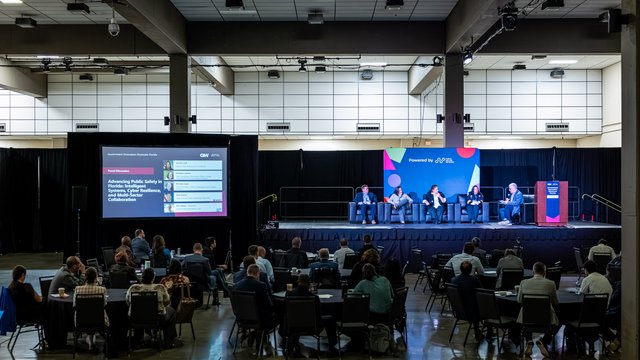
We had the chance to interview Paul Wagner, Assistant Deputy Minister, Strategy & Transformation, Treasury Board of Canada Secretariat at our Public Sector Innovation Show- Federal and ask him a few questions about his government keynote which focuses on digital ambition in the public sector. While there are many exciting emerging technologies, Wagner emphasizes the need to establish and maintain trust with citizens by focusing on strong service delivery. He suggests designing services that are human-centered, rather than just citizen-centric, to serve Canadians, Canadian businesses, and those looking to come to the country. Read more for details about where the Canadian Government are headed in 2023 and beyond!

What emerging technologies are you most excited about to improve citizen experiences?
My topic is about digital ambition, but it’s actually less about technology per se. There are some fantastic technologies out there to be sure, like the recently released Chat GPT and other advanced AI, but there are also the mundane technologies like the security and apps we all have on our mobile devices. In a sense, when you look at the applications and the platforms we have that support digital service delivery today, it’s a bit like the internet called and they want their apps back. In other words, there’s a lot of catching up to do.
So for me it’s really about establishing trust with citizens and maintaining that trust. I think we need to focus a lot more on strong service delivery and less on the technology itself, because the technology side of things will sort itself out and is being solved by many jurisdictions. We need to think about how to best serve Canadians, Canadian businesses and those looking to come to the country.
What would you like people to take away after your session?
As I said, it’s about citizen trust, but when I say ‘citizen’ I don’t necessarily mean Canadian citizens; I mean clients and people we interact with, including businesses and people coming to our country. Currently because of the global situation, there are a lot of people coming to Canada because we are a great country, but when they arrive, they don’t know our systems and don’t have all the necessary credentials like Canadian citizens. So when we design services, although we say they need to be citizen centric, that is a bit too myopic. What we really mean is that they need to be human-centered in the way they are designed and in the way they operate.
What are the biggest areas of innovation currently happening in your department?
At the Treasury Board Secretariat we don’t do a lot of technology development. But we are involved in bringing together policy and innovation, which to me is the beauty of digital. I think of what we do as a positive kind of Trojan Horse, where we plant the right information in the right place and create dialogue with people from policy centers, service design and service operation centers, and from technology centers too. We bring them together and see what can be done in terms of the art of the possible, in a focused forum for delivering services in the most effective way, and in a way that clients expect.
In my team as an example, we created portfolios and I’ve challenged the portfolio leads to understand their departments so well that they can sit down with their CIOs and talk about the way we start to integrate the services. For the most part, senior leaders are not thinking about integration; they are more concerned with delivering programs and the mandates of their Ministers or Deputy Ministers. That is important, but citizens (in a broad sense) expect services that cross mandates and cross silos. So the biggest opportunity for us, which can also be our biggest innovation as we move forward, is to harness this kind of cross-departmental, multi-jurisdictional view when it comes to designing services.
How did you get started in the In public sector, and what aspect of your job in the public sector do you find most rewarding?
Before I joined the public sector, I spent 10 years in the private sector, spending an awful lot of time traveling around the world, selling products and implementing products. It was interesting, but not entirely rewarding. Then in 1999 I came to a job fair in Ottawa and applied for a job with the Canadian federal government. I got hired as a Technical Team Lead (CS-03) and fast forward to today where I am very privileged to be the Deputy CIO of the country.
In my role, what gets me up in the morning is the ability to have an impact; the ability to sit down with all kinds of people, from directors, directors general and deputies, to Ministers, and to talk to them about how we can actually improve the lives of people and the position of the country, particularly from an economic and social perspective. There’s no other place that you can have that kind of impact, and it’s absolutely my motivation when I get up every morning.
Why do you believe peer-to-peer learning, like today’s session, is so important for government leaders and for yourself?
As we come out of the pandemic, it is so important to get together in person and to have a dialogue. We’ve been staring at little boxes on our computers for too long. Having people like myself present to an audience is really a great opportunity. For me, the goal is to have people walk away and to think about what was said. They don’t have to agree, but I’d like them to think about what they can do about it. If the dialogue and the thinking continues beyond the session or the event, then that to me is the biggest value of these events.

































